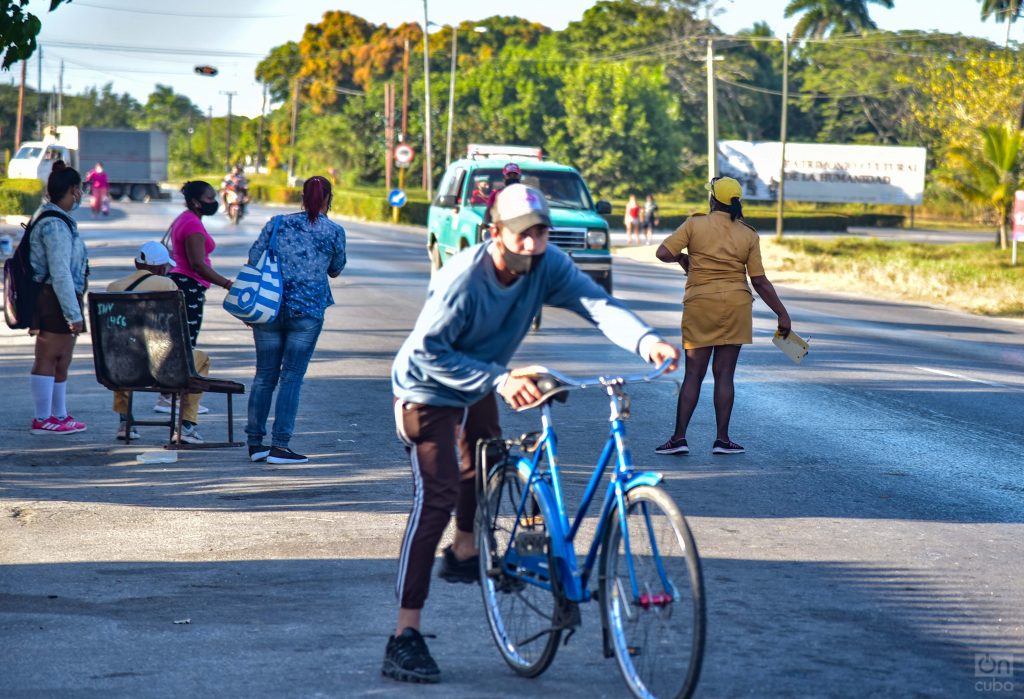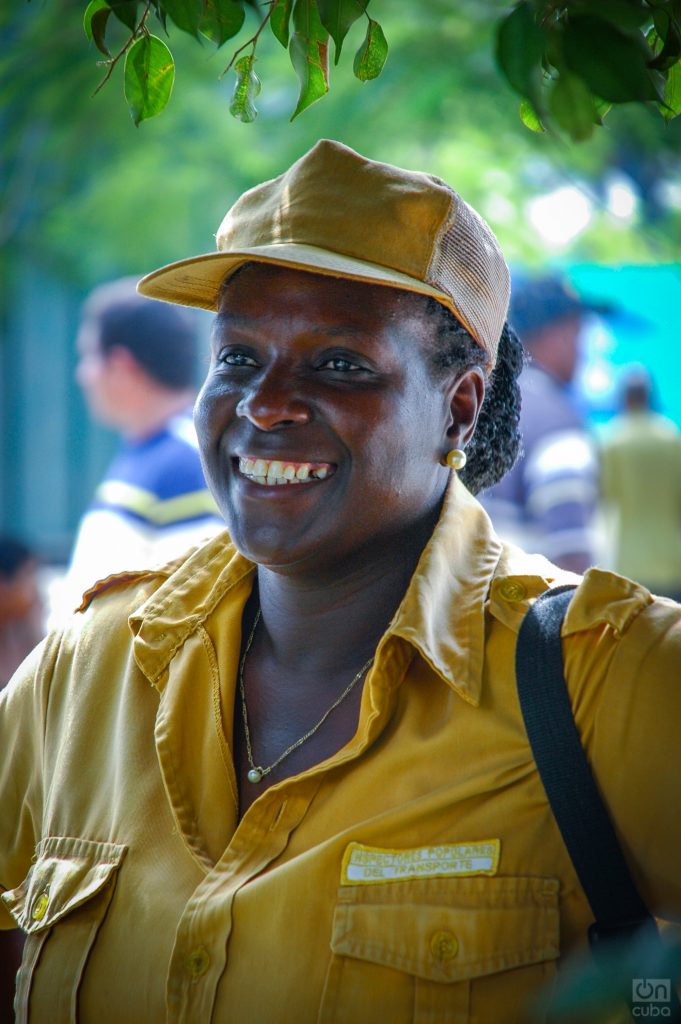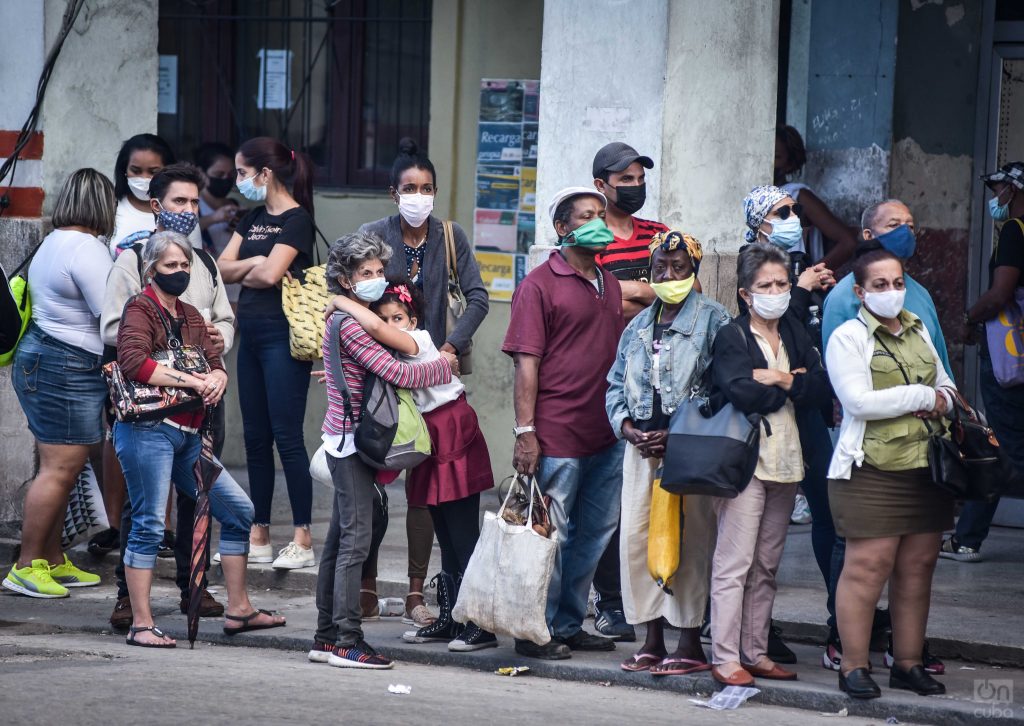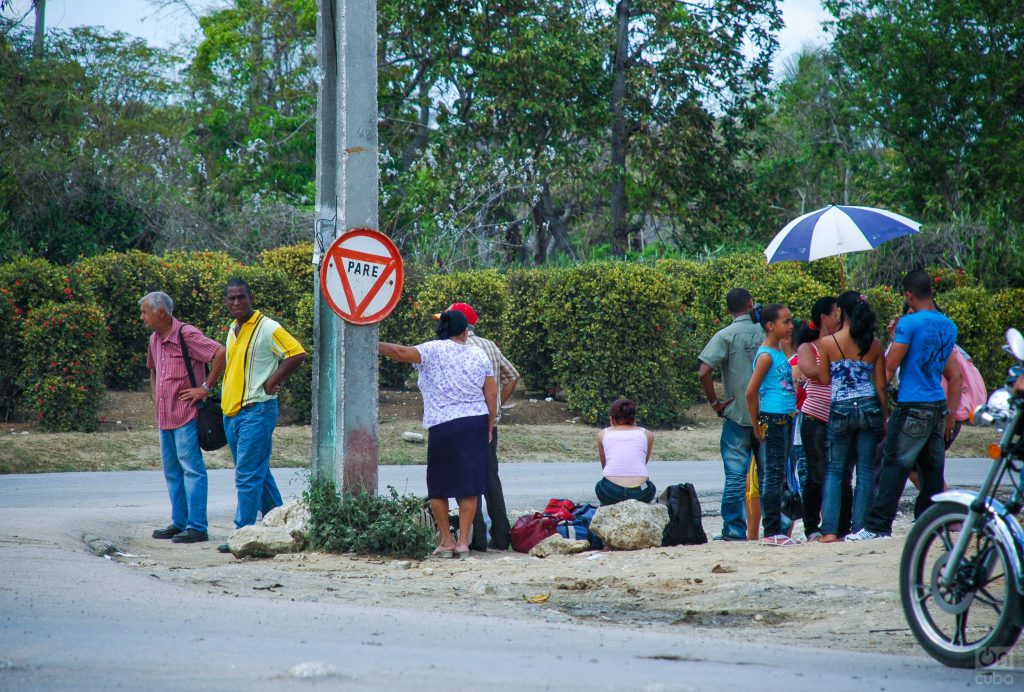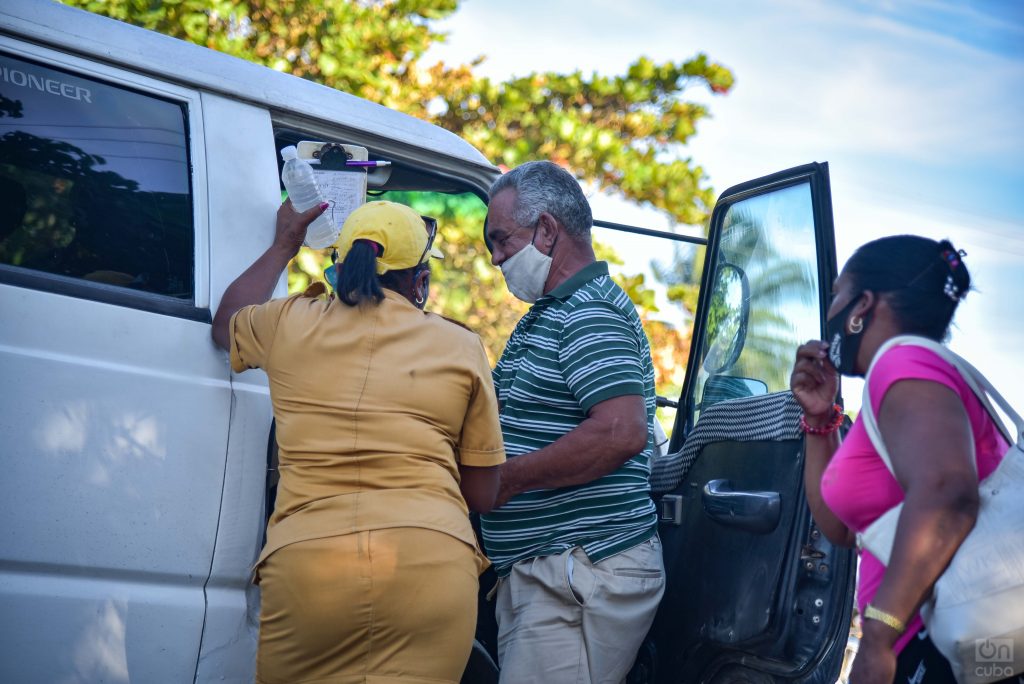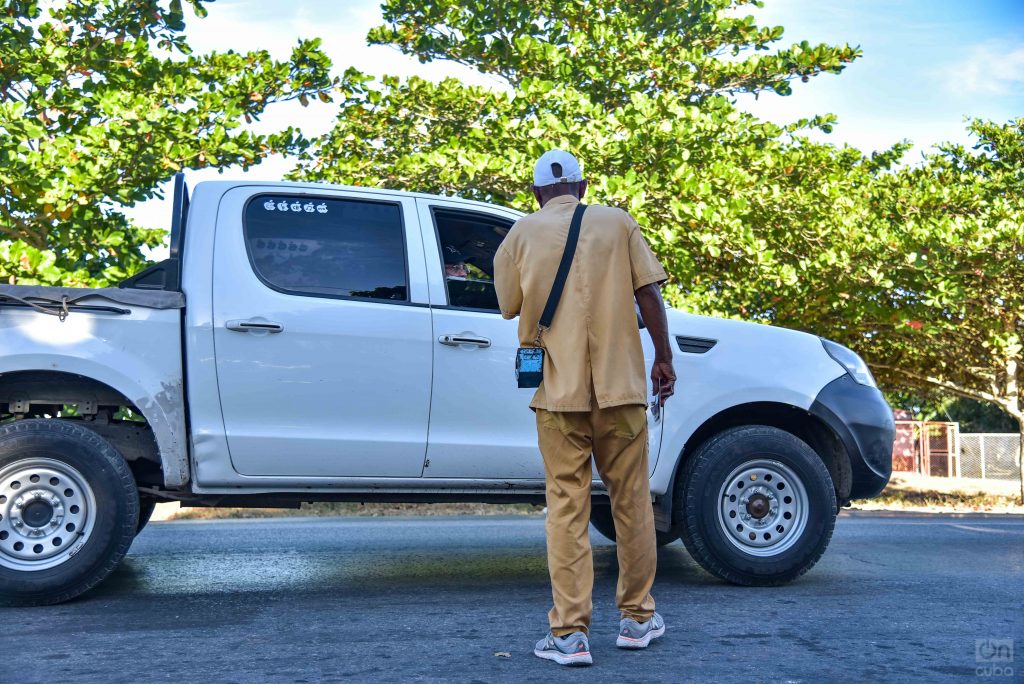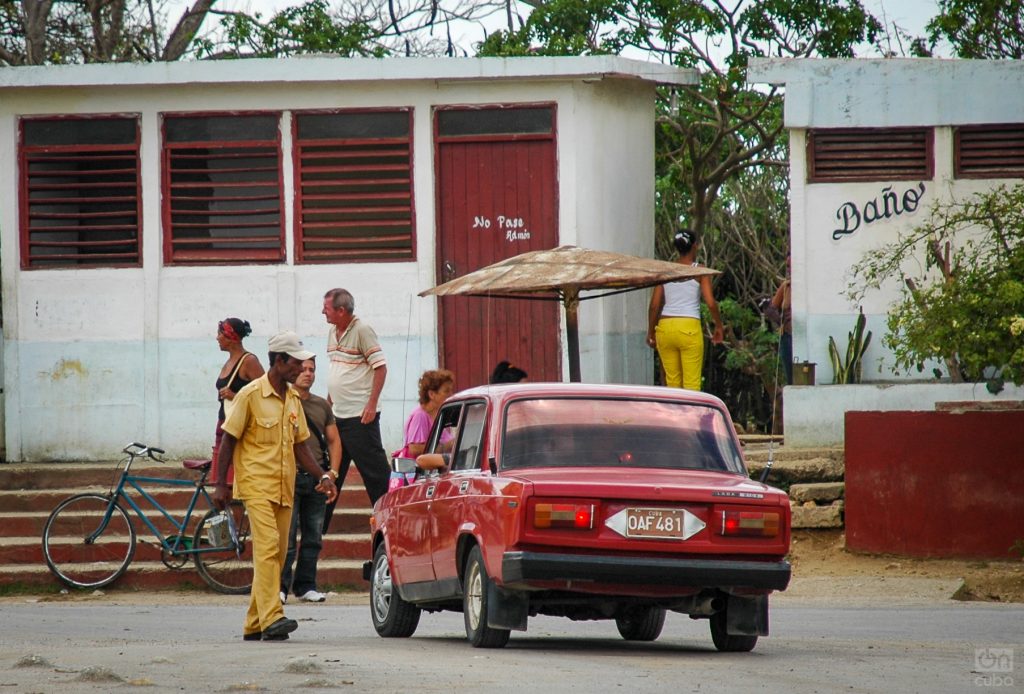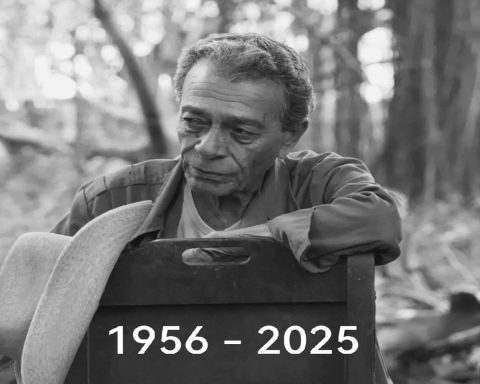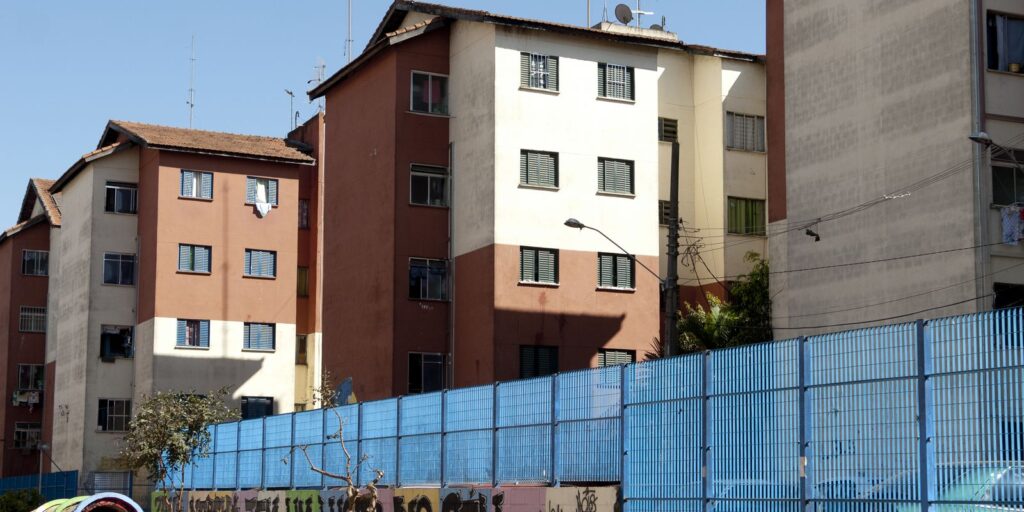The popular transport inspectors, better known as “Yellows”, appeared more or less thirty years ago as emerging hitters against the tough pitching of the lack of fuel in Cuba. They immediately became regular players, almost fourth-batters, in the perennial odyssey that Cubans go through with transportation on the Island. It is not surprising, since it is almost a rule that when “momentary” measures are announced in Cuba to tackle contingencies , these initiatives can last, at least, decades. It may even be that one day the measures disappear and when you least expect it, make an appearance again, as has happened for a few years with the “Yellows”.
With the heat of the Special Period, at the beginning of the nineties of the last century, this figure became the protagonist of the harsh Cuban daily life. He quickly went on to play such an important role in society that I am not exaggerating if I compare them to a doctor, an engineer or a teacher. So serious was —or is— the matter of Creole transportation.
The “Yellow” has the mission of stopping state vehicles with empty places to mount people. The people, always wise and quick to coin names, phrases and expressions, immediately baptized them that way because of the color of the uniform they wore. Those garments that, surely (and here I drop my theory) some “painting” devised, because that was the only color of fabric existing at the time in the stores.
The transport inspectors are installed from dawn to dusk at the entrances and exits of towns and cities, at roundabouts, at highway intersections and the most populous bus stops, those that, due to so much agglomeration of passengers, they can look like a parade of 1st. of May. Those points have also been popularly named as “The Yellows”.
Traveling through the “Yellows” implies, above all, a great deal of luck, patience and resignation. You know when you leave your house but never when you will arrive at that destination. A trip from Havana to Santiago de Cuba, about 800 kilometers long, can take a couple of days going from section to section, from province to province and always with a stopover from “Yellows” to “Yellows”. And at the expense of any type of transport. The question is not how we travel but at least the certainty that at some point we will arrive.
Like everything that goes beyond logic in Cuba, they dedicated a whole collection of jokes to Los Amarillos. The adaptation of the famous children’s story of Little Red Riding Hood and the Big Bad Wolf is famous. Once Little Red Riding Hood was going through the woods dressed in a guayabera and driving a Lada with a state license plate. In a curve she the she for the Wolf. “Where are you going, Little Red Riding Hood?” asked the beast dressed in full yellow defiantly. “I’m going to my grandmother’s house,” replied the girl with a leader’s voice. “Up, four passengers to Grandma’s house!” the Wolf shouted to a queue of animals waiting at a stop.
Another well-known humorada was the parody of the refrain of the well-known song “Amor de millions”, by the Cuban Sara González and who was also known internationally in salsa time in the voice of the Puerto Rican Gilberto Santa Rosa. He only changed the phrase “my love” for the word “yellow” in the middle of some verses, emphasizing the vehemence of ordinary Cubans when the inspectors finished their workday:
“Yellow don’t go, / I don’t want to see myself alone again. / Amarillo, don’t go, I’m crying.”
A few years ago it seemed that the “Yellows” were an endangered species. Although the transportation issue was still tricky (it has never stopped being), these characters were no longer seen so much with piggy banks, whistles and tablets to register the plates of the cars that passed fast and empty, ignoring the “STOP” sign ” of the yellow authority.
The point is that the figure of “Yellow” was once again scattered throughout the national territory. Even in some places, such as the city of Havana, they appeared dressed in new blue uniforms. But, as expected, people continued to call him “Yellows”.
The return to the streets of the inspectors was news throughout Cuba. In the media they titled it “before the popular clamor the yellow ones return”. And even in an official act of the Ministry of Transport there was delivery of diplomas.
“The importance of the work of the state transport inspectors was recognized in the act for the 30 years of that entity that took place in the Museum of the Revolution. Its workers have the mission of enforcing the laws in the transportation of cargo and passengers”, could be read on the front page of the weekly workers not long ago.
On the triumphant return of the “Yellows” and that writing in the press, the great popular philosopher Héctor Zumbado, had he been still alive, would surely have written a hilarious saga of Riflexiones, a linguistic “nonsense” to criticize, build and « throw to give, but smiling”, he said.
One day a film will have to be made about “Los Amarillos”, the passengers and other ups and downs of that mess. That would also be a sociological and physiognomic film of several generations of Cuban men and women. Moreover, to preserve the surreal memory of our country, I propose that when the “Yellows” no longer exist, they place plaques with the following inscription: “A point of Yellows worked here.” But for that to happen, it takes a long, long time.
That future is very far away because transportation in Cuba is a big deal, as they sing The Van Van. And, the “Yellows”, to continue with the “Cuban Music Train”, seem to hum: “And now I come as I come…/ I’m still there! / That’s why I stay”.

